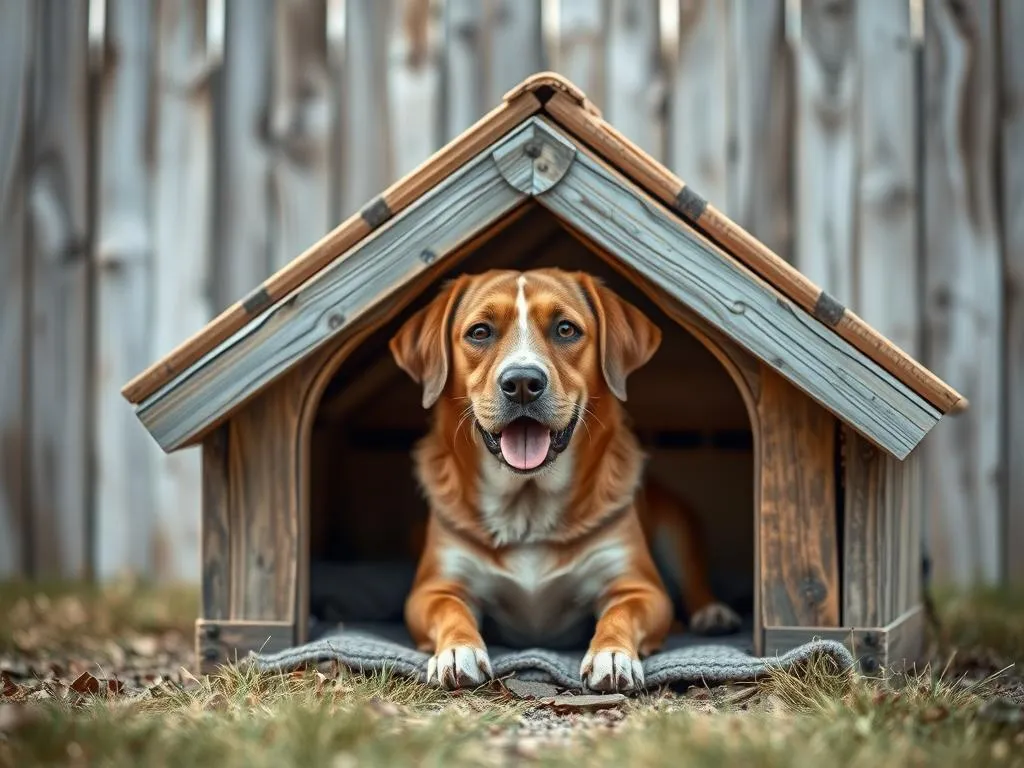
Introduction
Dog health care is a critical aspect of responsible pet ownership. Just like humans, dogs require a safe and nurturing environment to thrive. One often-overlooked component in this equation is the dog house. Many pet owners wonder, does my dog need a dog house? The answer isn’t straightforward and depends on several factors, including your dog’s breed, age, and health status. This article will explore the significance of dog houses in maintaining your dog’s health and well-being, addressing various needs and considerations.
Understanding Dog Health Needs
The Importance of a Healthy Environment
A safe and comfortable living space is essential for your dog’s health. Dogs are social creatures that thrive in environments where they feel secure. A well-constructed dog house provides a sense of safety, shielding them from harsh weather conditions and potential dangers.
Temperature regulation is crucial for your dog’s health. Exposure to extreme temperatures can lead to serious health issues. For instance, during cold winters, an unprotected dog may be at risk of hypothermia. Conversely, in hot summers, they may suffer from heatstroke. A dog house can help mitigate these risks by providing a controlled environment that keeps your pet comfortable.
Basic Health Care Requirements for Dogs
While a dog house can support your dog’s health, it is not a substitute for basic health care. Essential practices include:
- Vaccinations: Keeping your dog up-to-date on vaccinations is crucial for preventing diseases.
- Regular Vet Check-ups: Routine health checks can identify potential health issues early.
- Balanced Diet: A nutritious diet tailored to your dog’s needs supports overall health.
- Regular Exercise: Daily physical activity keeps your dog fit and mentally stimulated.
The Role of a Dog House in Health Care
Shelter from the Elements
Providing your dog with a dog house offers significant protection against the elements. A sturdy dog house can shield your pet from:
- Rain: Wet conditions can lead to skin infections and other health issues.
- Snow and Cold: Dogs can suffer from the cold just like humans, making a dog house essential in winter months.
- Heat: During hot weather, a shaded and ventilated dog house can help prevent overheating.
By offering protection from these elements, a dog house can significantly reduce the chances of health problems like hypothermia or heatstroke.
A Safe Space for Your Dog
Beyond physical protection, a dog house serves as a psychological refuge. Dogs can experience anxiety and stress, particularly in noisy or chaotic environments. A designated safe space, such as a dog house, can provide comfort and security.
Research shows that having a specific area to retreat to can help reduce anxiety in dogs. This is especially important for dogs that may not feel comfortable indoors or those who are left alone for extended periods.
Assessing Your Dog’s Needs
Breed-Specific Considerations
Different breeds have varying needs, and some may benefit more from having a dog house than others. For example:
- Large Breeds: Breeds like Great Danes or Mastiffs may require larger dog houses to accommodate their size.
- Small Breeds: Tiny dogs might need more protection from the cold, making an insulated dog house a necessity.
- Coat Type: Dogs with thick fur, like Huskies, may tolerate outdoor conditions better than short-haired breeds.
Understanding your dog’s specific needs based on their breed can help you determine whether a dog house is necessary.
Age and Health Status
Your dog’s age and health condition are also critical factors in deciding if they need a dog house.
- Puppies: Young dogs may benefit from a dog house as they are more susceptible to temperature changes.
- Adult Dogs: Healthy adult dogs can adapt to various environments, but a dog house can still provide a safe haven.
- Senior Dogs: Older dogs, especially those with conditions like arthritis, may require a cozy, warm space to rest.
Assessing your dog’s health status can greatly influence the decision to provide them with a dog house.
Choosing the Right Dog House
Size and Design
Selecting the appropriate size for your dog house is crucial. The house should be large enough for your dog to stand, turn around, and lie down comfortably.
Design Considerations:
- Insulated Dog Houses: Ideal for colder climates, insulated designs help maintain a comfortable temperature.
- Elevated Dog Houses: These can prevent moisture from seeping in and provide better airflow, especially in warmer areas.
Materials and Durability
The material used to construct a dog house can greatly affect its longevity and comfort. Common materials include:
- Wood: Offers good insulation but requires regular maintenance to avoid rot.
- Plastic: Lightweight and easy to clean, but may not provide as much insulation.
- Metal: Extremely durable but can get very hot in summer and cold in winter.
Choose a material that suits your climate and your dog’s needs for comfort and safety.
Location and Placement
The placement of the dog house is just as important as its design. Ideal locations should consider:
- Sun Exposure: Ensure the house provides shade during the hottest parts of the day.
- Wind Direction: Position the entrance away from prevailing winds to keep your dog protected.
- Proximity to Home: Keeping the dog house near your living space allows for easy interaction and monitoring of your pet.
Maintenance of the Dog House
Regular Cleaning
Maintaining a clean dog house is vital for your dog’s health. A dirty environment can harbor bacteria and parasites.
Cleaning Steps:
- Remove Bedding: Take out any bedding or blankets and wash them regularly.
- Sweep and Scrub: Sweep out debris and scrub the interior with mild soap and water.
- Check for Damage: Regularly inspect for any signs of wear or damage and repair as needed.
Seasonal Adjustments
Adapting the dog house for seasonal changes can enhance your dog’s comfort and health.
Winterizing Tips:
- Insulate the walls with blankets or straw.
- Use a heated mat for colder nights.
Keeping Cool in Summer:
- Provide shade using tarps or placing the house strategically under trees.
- Ensure proper ventilation by leaving the door open when safe.
Alternatives to Dog Houses
Indoor Options
For some dogs, especially those who primarily stay indoors, alternatives such as dog beds or crates may be more appropriate.
- Dog Beds: Offer comfort and style, suitable for dogs who enjoy being inside.
- Crates: Can provide a secure, den-like space for dogs that feel anxious when alone.
Dog Tents and Portable Shelters
Dog tents or portable shelters are great alternatives for travel or camping. These options provide flexibility and ease of use, allowing you to create a safe space for your dog wherever you go.
Conclusion
In summary, a dog house can play a significant role in your dog’s overall health care. It provides essential shelter from the elements and a safe space for your pet to retreat. However, whether your dog needs a dog house depends on various individual factors, including breed, age, and health status. By considering these aspects, you can make an informed decision that prioritizes your dog’s well-being.
FAQs
Common Questions About Dog Houses
Do all dogs need a dog house?
Not all dogs require a dog house, but many can benefit from having one, especially if they spend time outdoors.
How can I tell if my dog is comfortable in their house?
Signs of comfort include your dog willingly entering the house, lying down inside, and showing relaxed body language.
What size dog house do I need for my breed?
Choose a dog house that allows your dog to stand, turn around, and lie down comfortably, typically 2-3 inches taller than their height.
How can I keep my dog house warm in winter?
Insulate the house, use bedding like straw or blankets, and consider a heated mat for added warmth.









